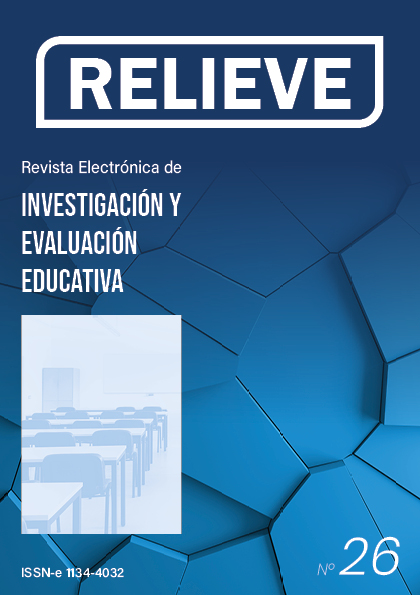University dropout: Prevention patterns through the application of educational data mining
DOI:
https://doi.org/10.7203/relieve.26.1.16061Keywords:
Student environment, Computer learning, Decision trees, Counseling, Feature selectionAbstract
Recently, the use of educational data mining techniques has gained great relevance when applied to performance prediction, creation of predictive retention models, behaviour profiles and school failure, amongst others. For the present paper we applied an attribute selection algorithm to identify the most important factors influencing drop out decision. Decision trees were used to define patterns that can alert an imminent dropout. A tool was adapted and administered online to 300 students from public HEIs, and 200 students from private HEIs currently enrolled on a higher education program. By means of the attribute selection algorithm, 27 relevant factors were found. Within the three main factors, the lack of counselling, an adequate student environment and academic follow-up were recognized, whilst, 7 patterns were found through the decision tree. These included factors such as: student environment, insufficient financial support, experience of an uncomfortable situation and place of career choice, amongst others. Finally, it has been seen that school drop-out does not depend on a single factor but is multifactorial. It is imperative to expand the sample to include other cities. This will enable various algorithms to be applied, providing greater information and leading to the establishment of accurate mechanisms for reducing university drop-out rates, according to the characteristics of the student population in each region.
Downloads
Downloads
Published
How to Cite
Issue
Section
License
The authors grant non-exclusive rights of exploitation of works published to RELIEVE and consent to be distributed under the Creative Commons Attribution-Noncommercial Use 4.0 International License (CC-BY-NC 4.0), which allows third parties to use the published material whenever the authorship of the work and the source of publication is mentioned, and it is used for non-commercial purposes.
The authors can reach other additional and independent contractual agreements, for the non-exclusive distribution of the version of the work published in this journal (for example, by including it in an institutional repository or publishing it in a book), as long as it is clearly stated that the Original source of publication is this magazine.
Authors are encouraged to disseminate their work after it has been published, through the internet (for example, in institutional archives online or on its website) which can generate interesting exchanges and increase work appointments.
The fact of sending your paper to RELIEVE implies that you accept these conditions.














